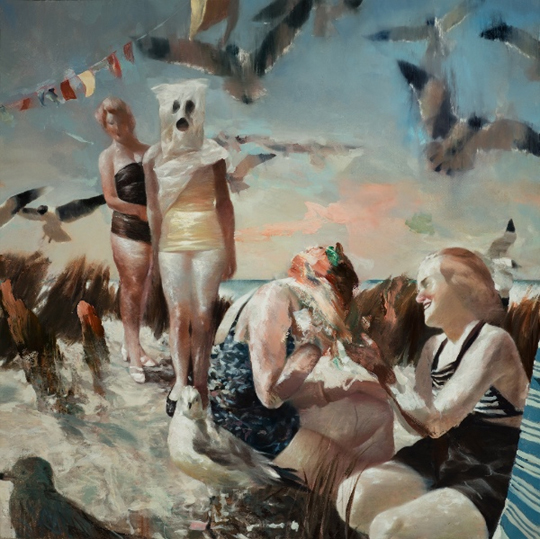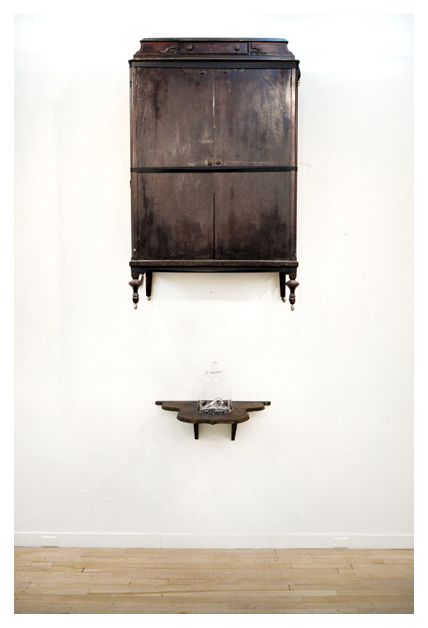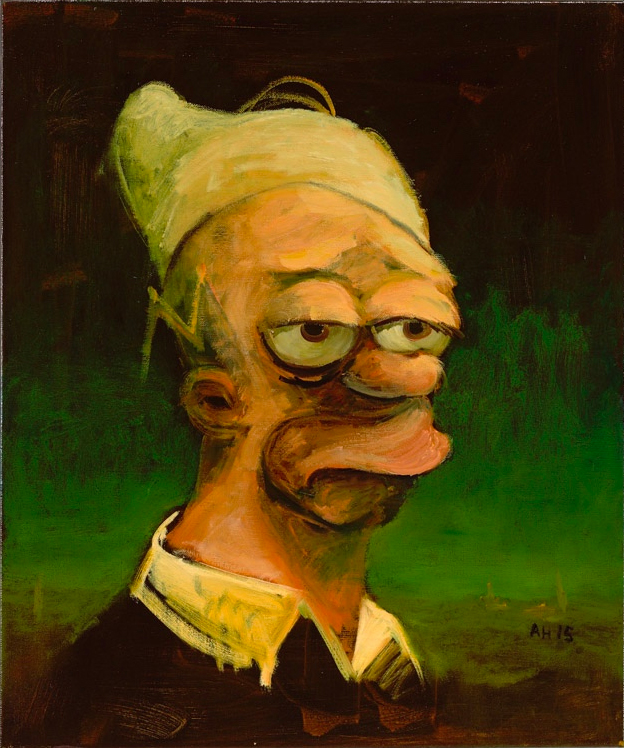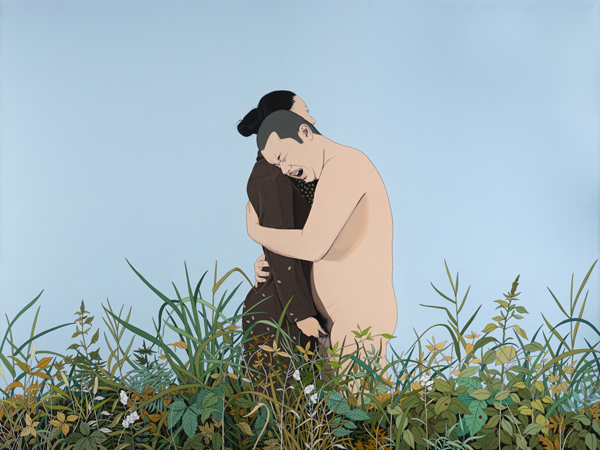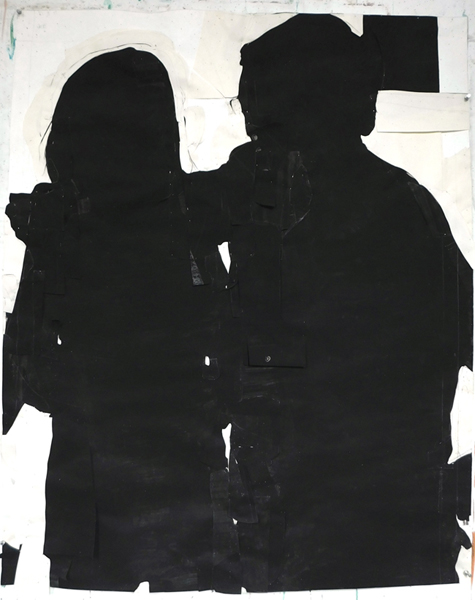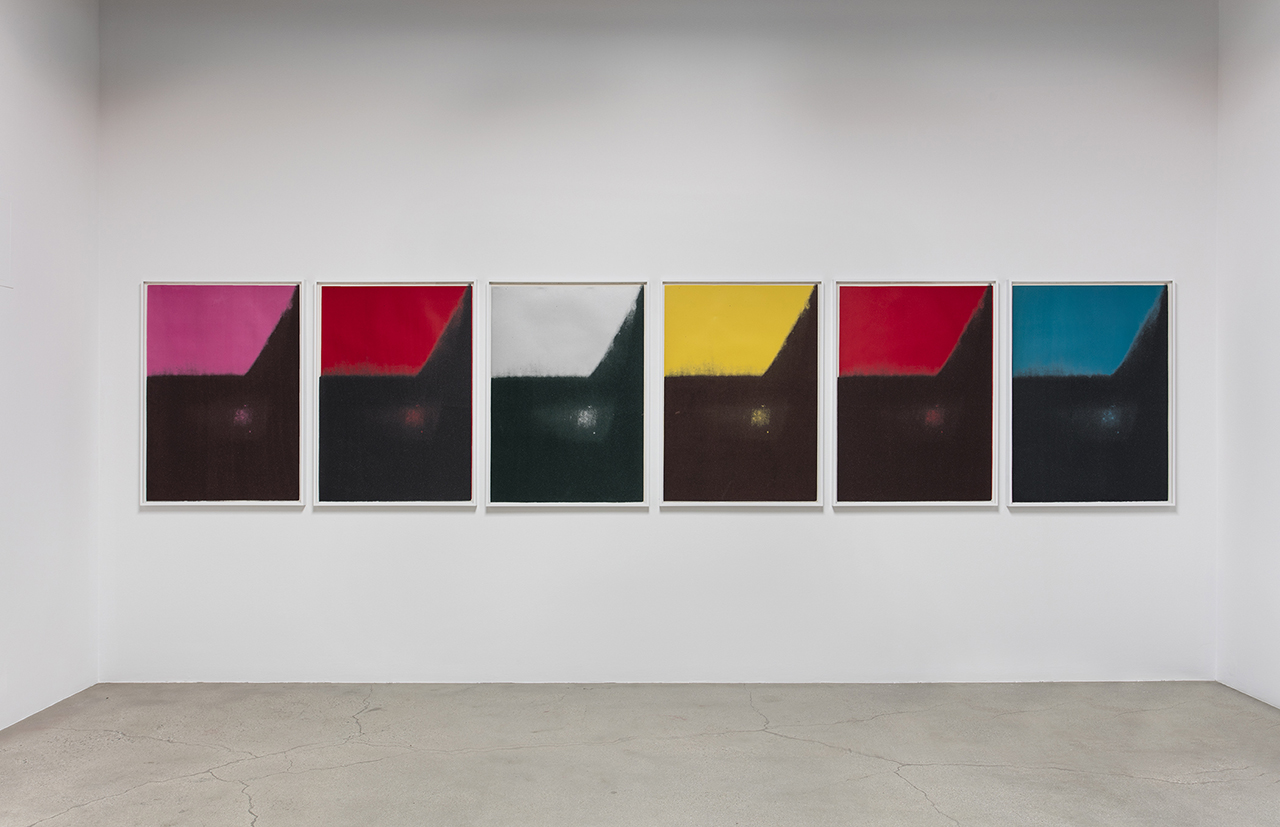LARS ELLING – LUCID DREAMING
2016-04-04Lars Elling’s work features a rich spectrum of narratives broken up into different sequences and which, together, form a transitory pictorial universe. The literary content in his work is articulated through filmic and photographic references that are played out against the non-figurative grammar of the paintings. Thus, a subtle play arises between figurative and abstract elements, an alternation between clearly rendered and more blurred, indistinct areas of the painting. The many lines into the literary landscape are woven together with auto-biographical material, with the nostalgic retrospective glance accentuated in the referencing of the artist’s own family photo album, forming an enigmatic, mysterious passage into a dream -like reservoir of memories. The impulsive acts played out in the paintings suggest a desire that has broken free from the control mechanisms of rationality, with the human figures moving instinctively from an existence ruled by convention and into a purposeless fulfilment of self.
His layers of imagery evoke memories of childhood, with the possible disturbance and trauma written between the lines. Family is the repetitive theme in Elling’s works; familiar moments infiltrated by surprising or unpleasant elements. The formalistic aspect of Lars Elling’s paintings is characterized by the erased and the broken. The pure visual expression has a meaningful function, where story and poetry are strong fundamentals. The paintings can be seen as a burst of memory, a description of a moment, where the almost experienced or almost seen is presented in a dream like and poetic expression, which can be compared to the poetic expressions in the works of Francis Bacon. Like Bacon, Elling also portrays a description of the logic of feelings, and illustrates a beginning, a middle section and an end, not necessarily in that order.
Opposite – “Initiation”, 2015
Exhibition runs through till April 23rd, 2016
Michael Janssen Berlin
Potsdamer Str. 63
D-10785 Berlin
Germany
